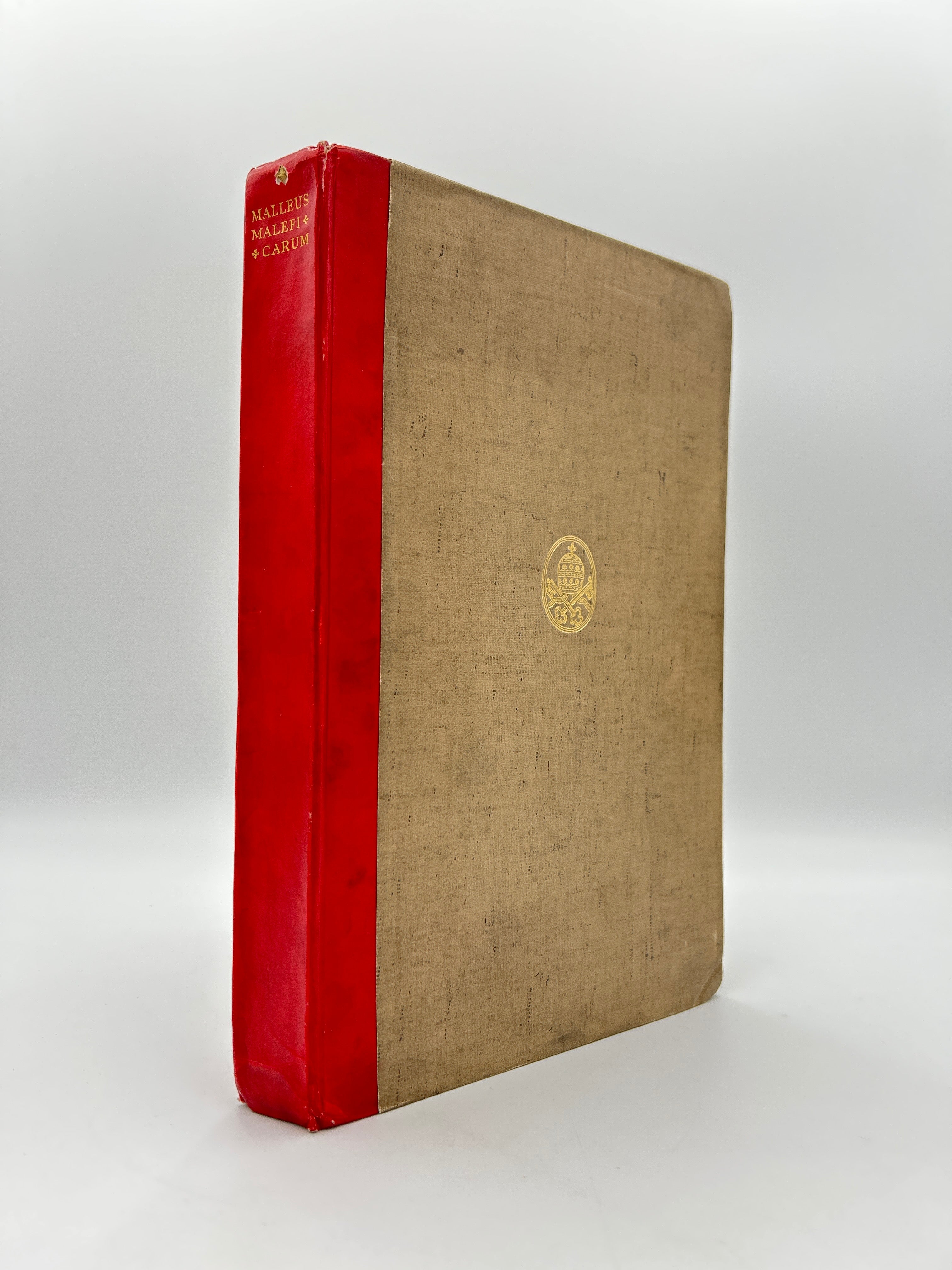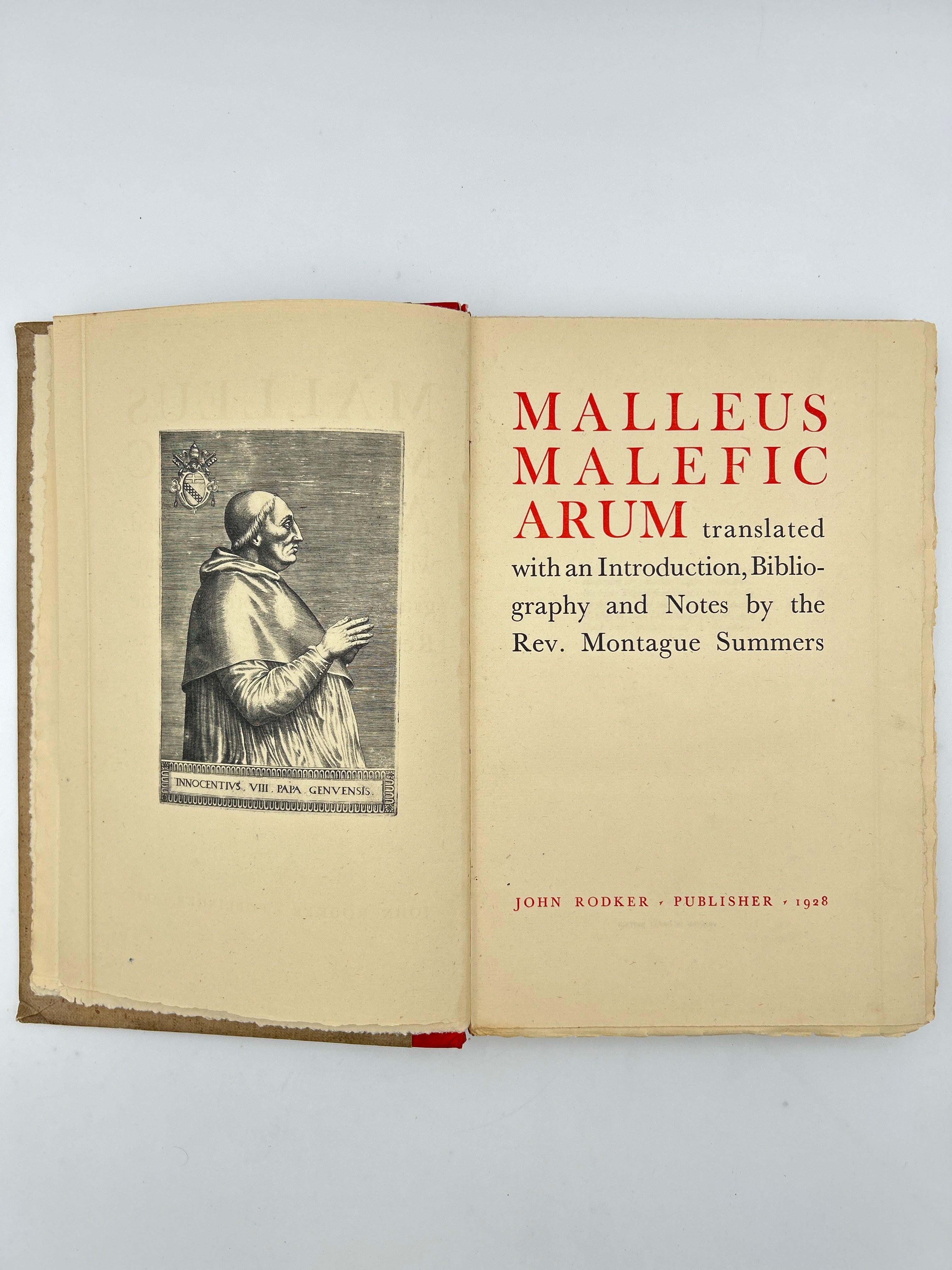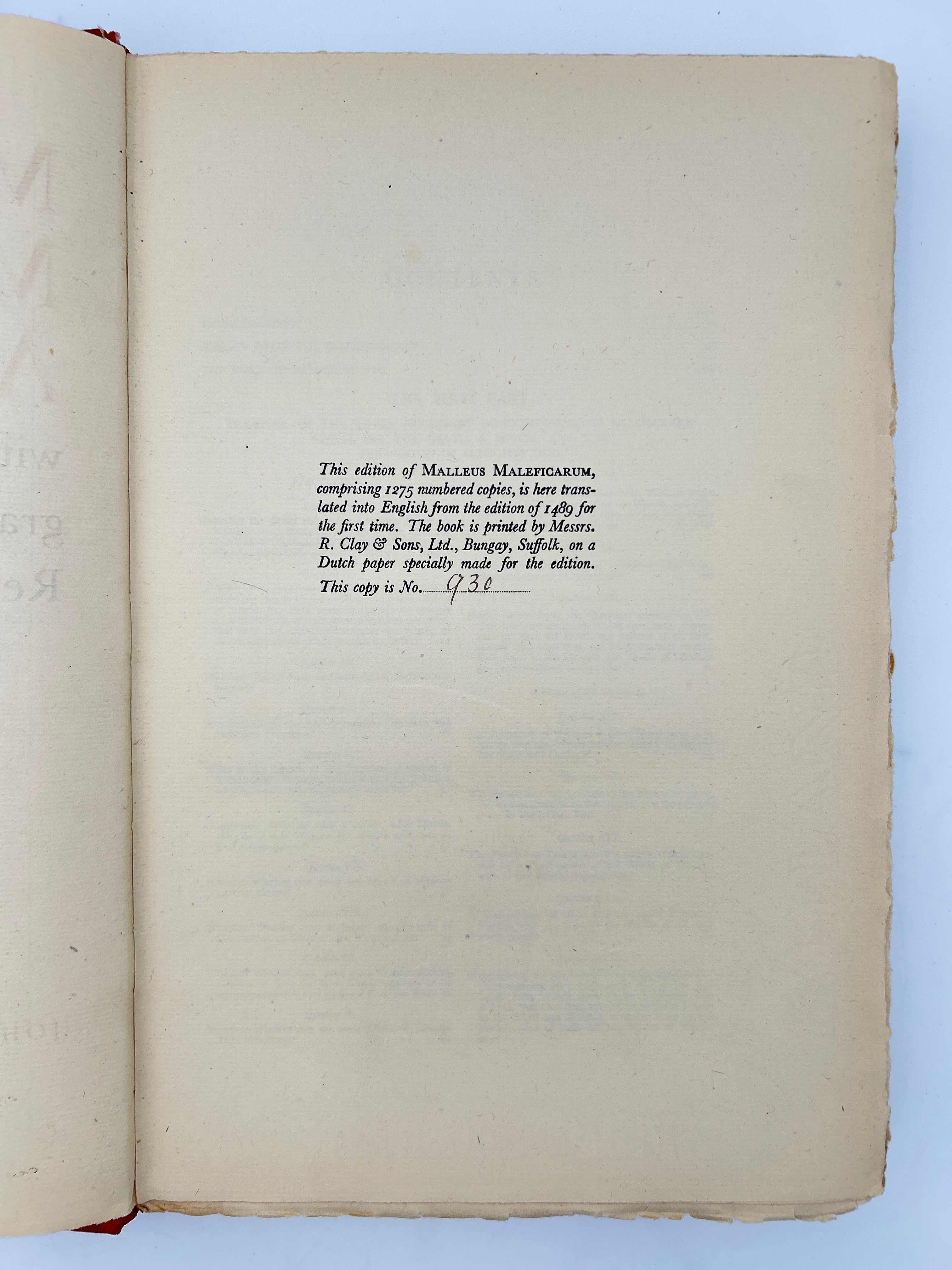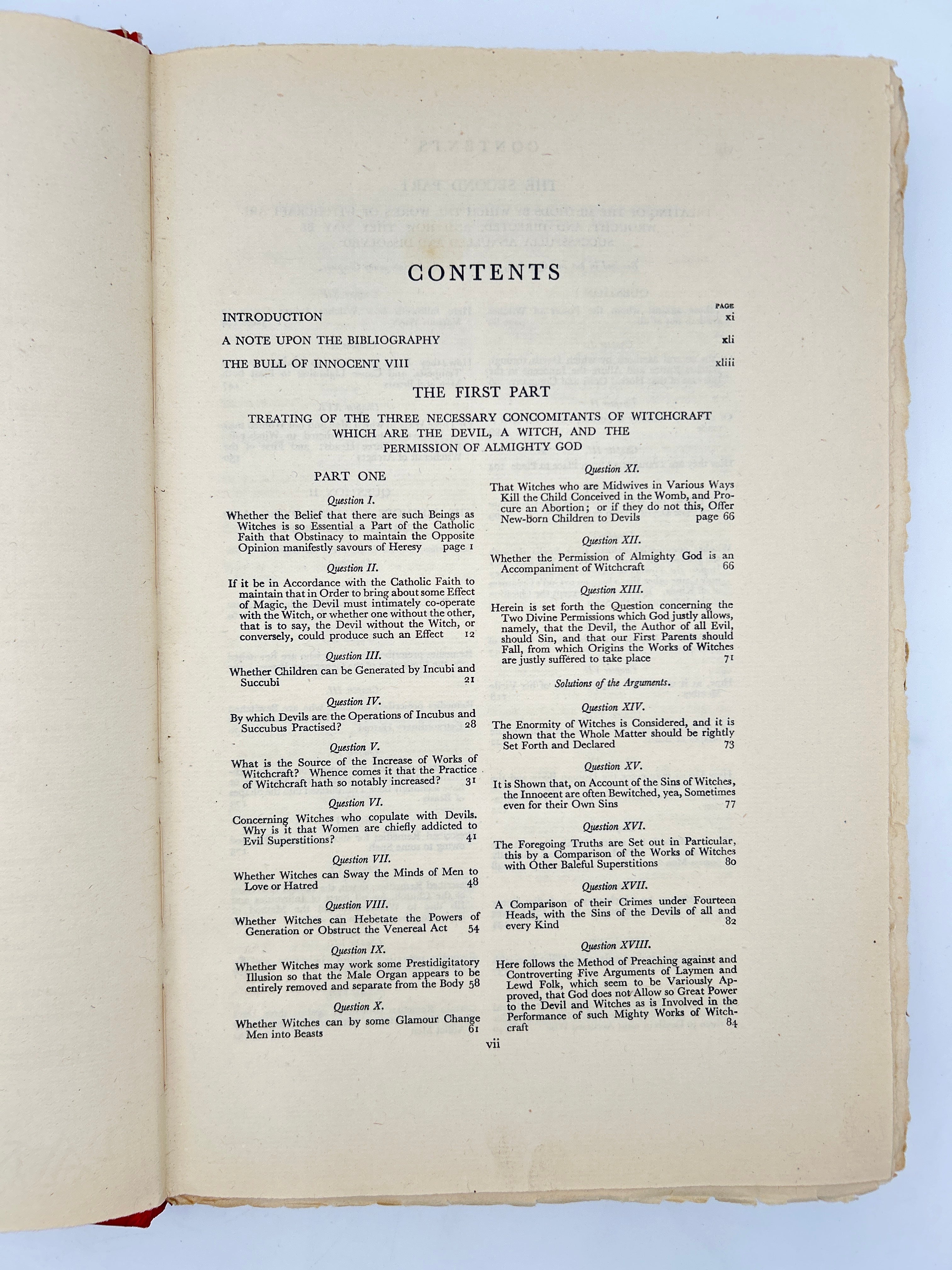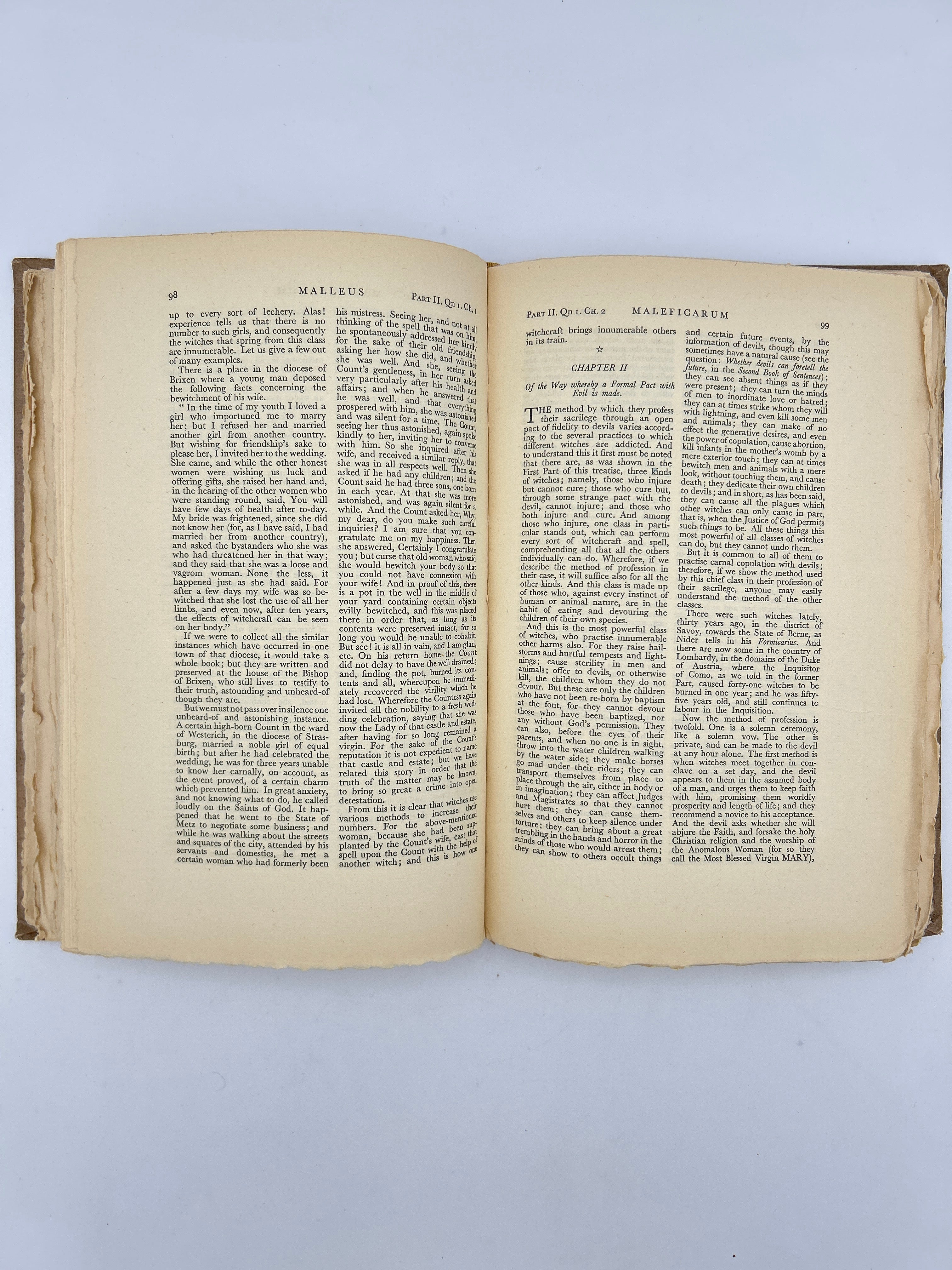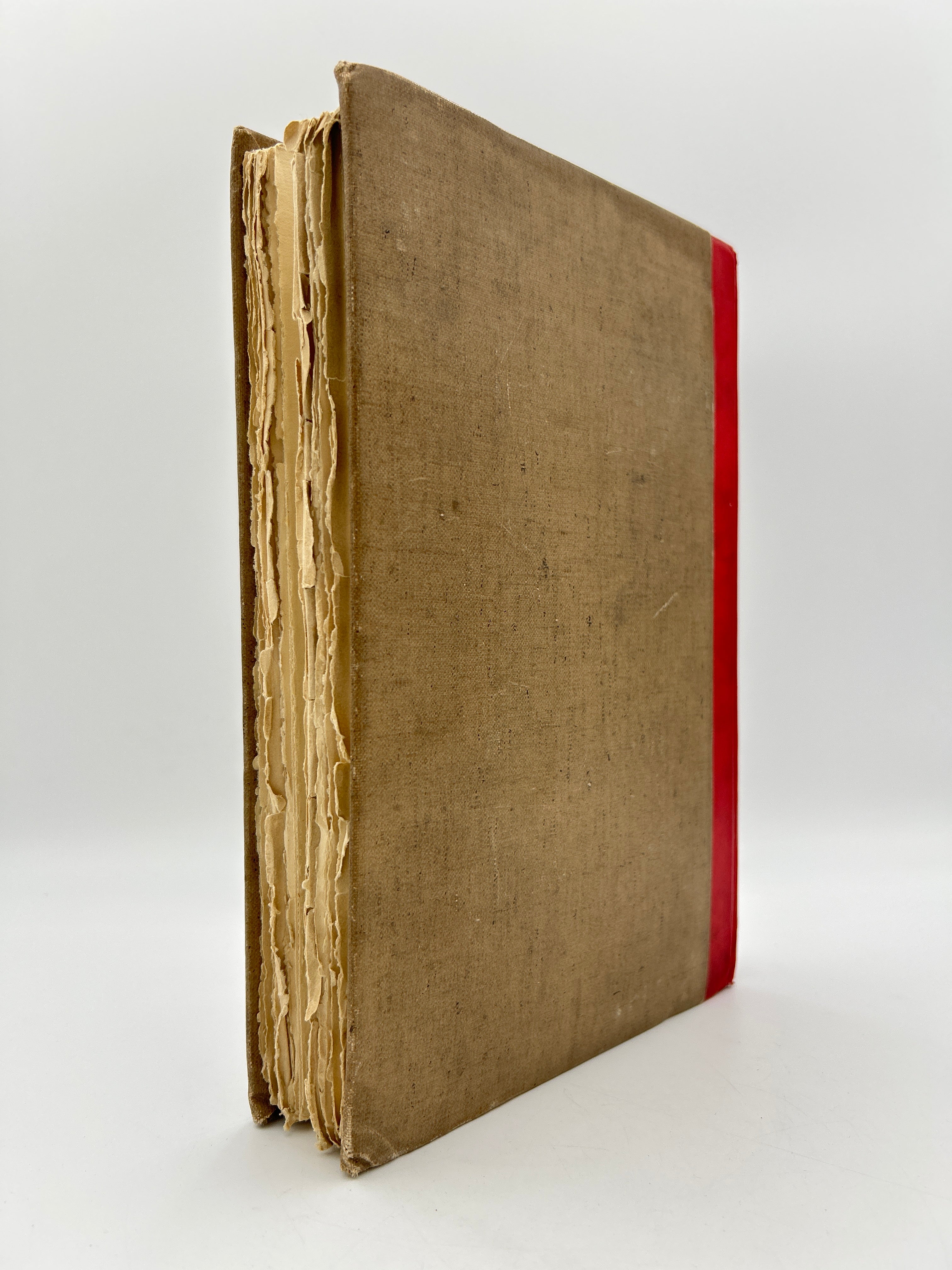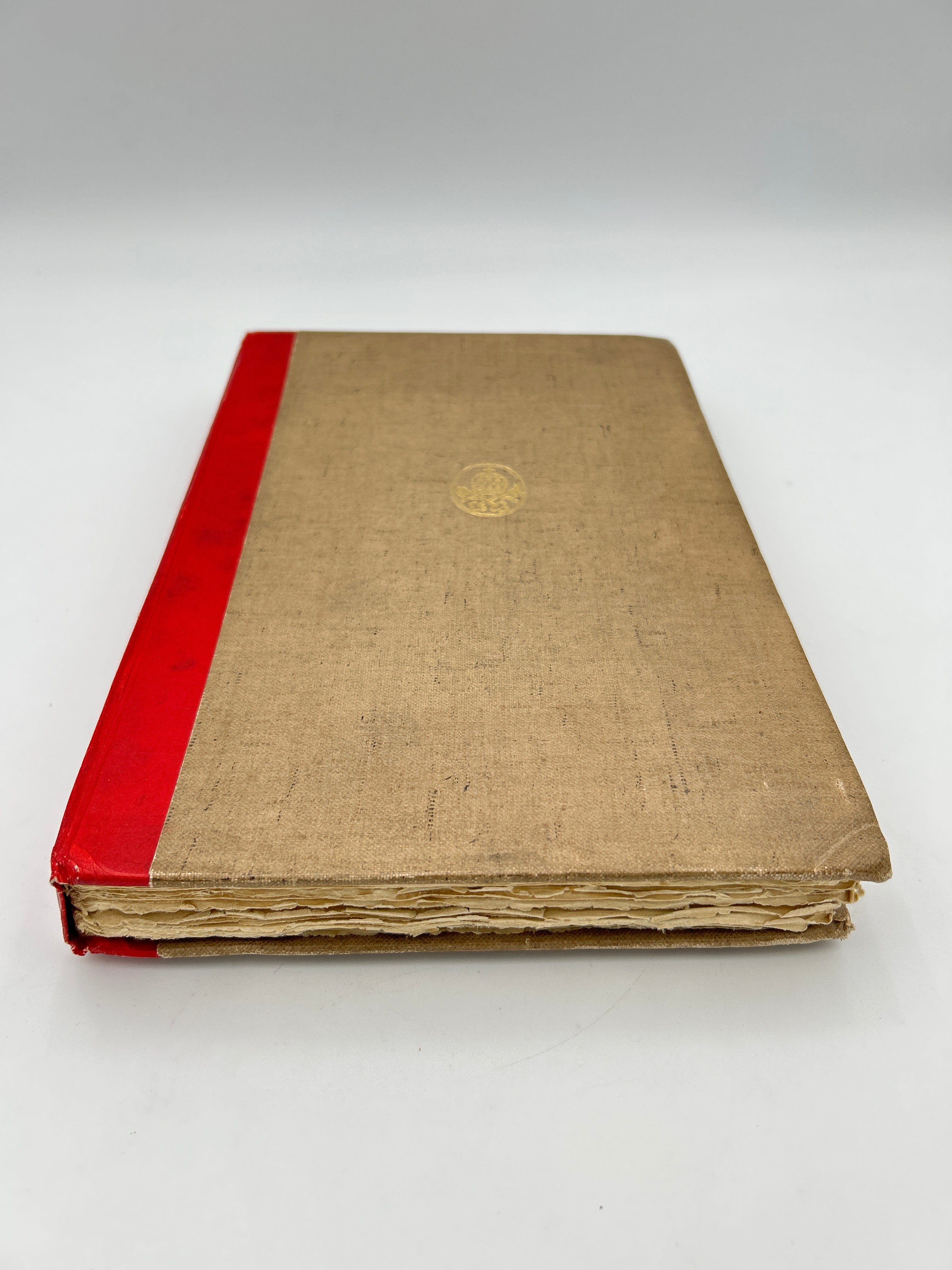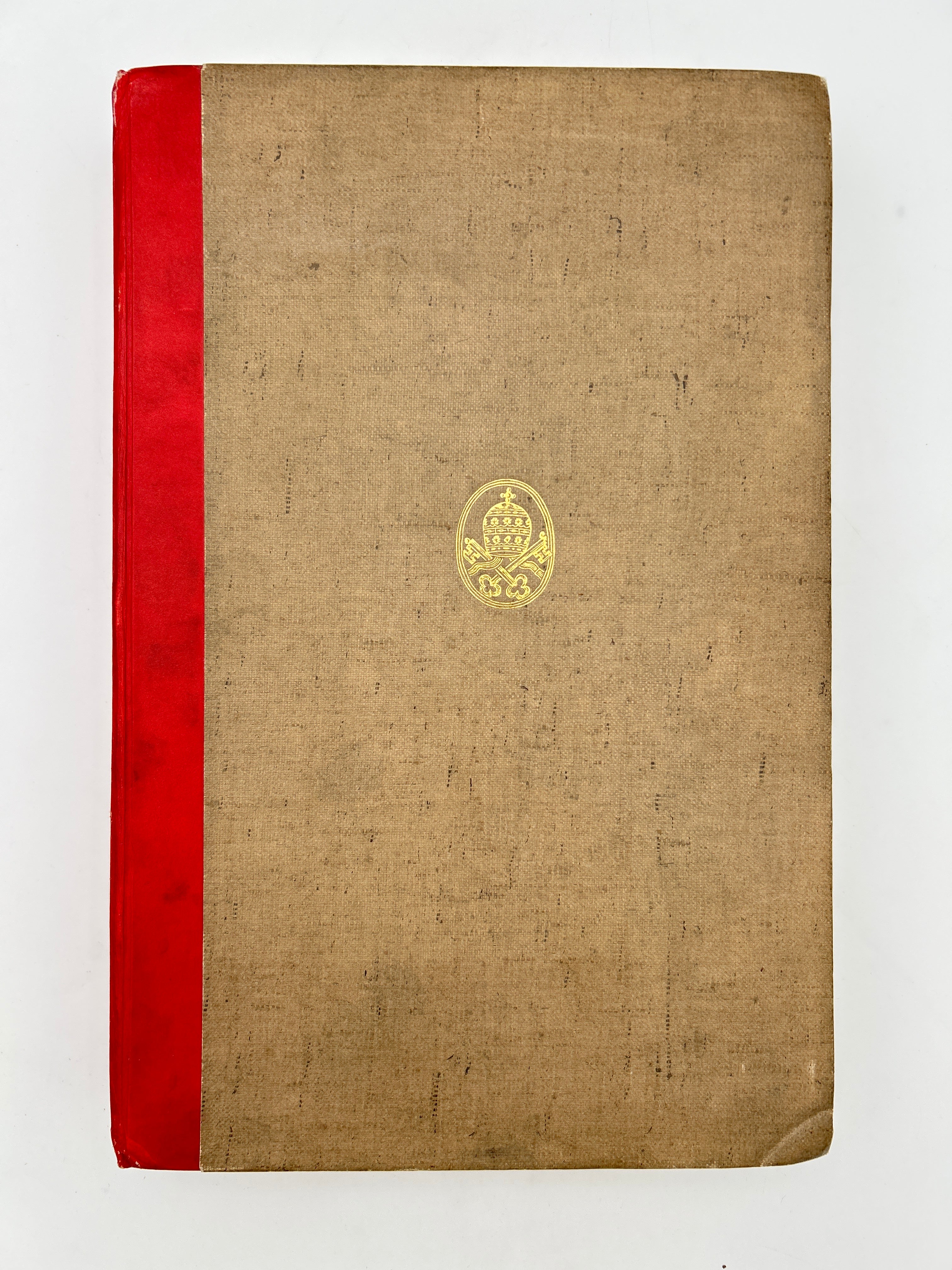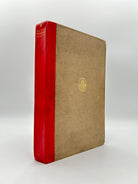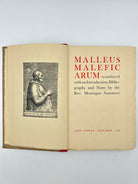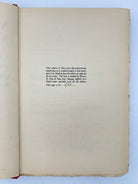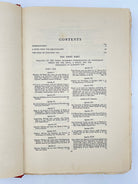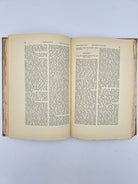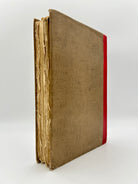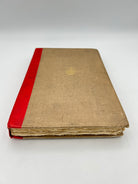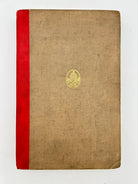Malleus Maleficarum 1928
Couldn't load pickup availability
5b With Introduction, Bibliography and Notes by the Rev. Montague Summers. John Rodger, 1928.
Notes
The Malleus Maleficarum (The Hammer of Witches) is a notorious 15th-century treatise on witchcraft, authored by Heinrich Kramer. It provides a theological justification for the persecution of witches, emphasizing their supposed depravity, renunciation of God, and alliances with demons. The text claims that women are more susceptible to witchcraft due to their moral and physical weaknesses, citing misogynistic views rooted in Eve’s original sin and carnal lust. The first part of the book asserts these theological foundations, while the second part outlines alleged practices of witches—casting spells, causing sterility, attending sabbaths, and engaging in sexual acts with demons. Remedies such as exorcisms or protective amulets are discussed, though some are deemed unlawful if demonic aid is involved. The third section focuses on legal procedures, detailing methods for identifying and prosecuting witches, including torture to force confessions and the search for "devil’s marks." Execution, often by burning, is recommended as the ultimate punishment.
Despite its influence, the Malleus was controversial from the start. The University of Cologne's Faculty of Theology condemned it in 1490 for its illegal procedures and deviation from orthodox Catholic demonology. Nevertheless, its misogynistic ideology—claiming women are naturally deceitful, lustful, and prone to witchcraft—helped fuel widespread witch hunts. Women made up the vast majority of the accused. The book gained traction during periods of witch trial peaks (notably between 1560 and 1630), especially in Germany, Italy, and France. Both Protestant and Catholic authorities used the Malleus, illustrating its cross-denominational appeal. Figures like Martin Luther endorsed its harsh stance on witches. Ultimately, the Malleus Maleficarum played a major role in intensifying European witch hunts between 1450 and 1750, contributing to the trials and executions of tens of thousands of people. Its detailed procedures and theological framing made it one of the most influential—and infamous—texts in the history of witchcraft persecution.
The 1928 English translation of Malleus Maleficarum, produced by Montague Summers, marked the first full version of the text available to English-speaking readers. A controversial figure himself—an eccentric scholar and self-proclaimed Catholic priest with a deep interest in the occult—Summers approached the translation not with skepticism, but with apparent sympathy for the original authors’ belief in witchcraft. His edition preserved the dense scholastic language and theological arguments, complete with extensive footnotes and a fervent introduction defending the existence of witches. While modern scholars often critique Summers’ lack of critical distance, his translation helped revive interest in early modern witch trials and made the Malleus accessible to historians, occultists, and general readers alike. It remains widely used today, both as a historical document and as a symbol of how superstition and institutional power once combined to justify brutal persecution.
Description
Tan cloth binding with red leather spine. Gilt embossed decal on upper board. Gilt lettering on spine. Small tear to center of upper spine. Bumping to points. Four edge and bottom edge deckled.
